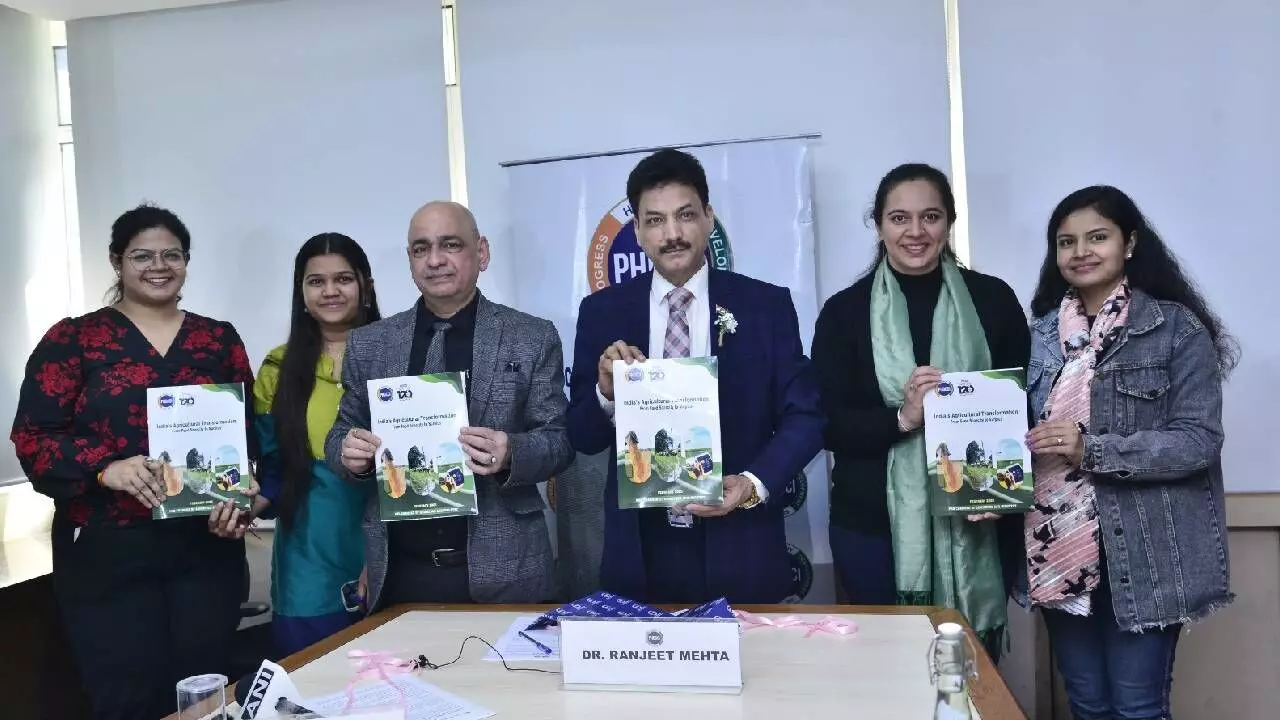Agriculture drives India’s growth trajectory towards Viksit Bharat: PHDCCI
An analysis conducted by the PHD Research Bureau, PHD Chamber of Commerce and Industry on “India’s Agricultural Transformation: From Food Scarcity to Surplus” highlights that the agriculture sector's performance remains pivotal for both economic growth and employment generation in the country, underscoring the need for sustained focus on agriculture infrastructure and investment
Agriculture drives India’s growth trajectory towards Viksit Bharat: PHDCCI

Mumbai, Feb 22: An analysis conducted by the PHD Research Bureau, PHD Chamber of Commerce and Industry on “India’s Agricultural Transformation: From Food Scarcity to Surplus” highlights that the agriculture sector's performance remains pivotal for both economic growth and employment generation in the country, underscoring the need for sustained focus on agriculture infrastructure and investment.
India's agriculture and allied sector has been growing strongly. From 2013-14 to 2023-24, the sector maintained a growth rate of 3.9% (average), emphasising its steady contribution to the nation’s economy. Even during pandemic, agriculture remained vital, achieving a commendable 4% (average) growth rate, said Mr Hemant Jain, President, PHD Chamber of Commerce and Industry, in a press statement issued here today.
Food processing industry will reach USD 2 trillion with agriculture and food processing exports of USD 700 billion by 2047, said Mr Jain.
India's agriculture sector has transformed, evolving from a food-scarce nation to a food-surplus powerhouse. Agriculture growth for 2024-25 is estimated at 3.8%, reflecting the sector’s ability to support India on its glorious path to Viksit Bharat, said Mr Jain.
For the year 2024-25, we project foodgrain production grow by 2%, to about 3357 lakh tonnes, says Dr. Ranjeet Mehta, CEO & Secretary General, PHD Chamber of Commerce and Industry.
India's overall export performance remains robust, highlighting the sector's resilience and its significant role in the global agricultural trade landscape. Agriculture exports experienced substantial growth, increasing from more than USD 39 billion in 2013-14 to over USD 52 billion in 2022-23, said the Industry body PHDCCI.
PHDCCI projections indicate a significant expansion in agricultural and processed food products exports, with exports reaching to USD 125 billion by FY2030, USD 250 billion by FY2035, USD 450 billion by FY2040, and USD 700 billion by FY2047, said Dr Mehta.
India’s food processing sector is expected to reach USD 700 billion by FY 2030, USD 1100 billion by FY2035, USD 1500 billion by FY 2040 and USD 1900 billion by FY 2040 and USD 2150 billion by 2047, highlighted the analysis.
We appreciate that the centre and state governments have been taking prudent policy measures and implementing strategic schemes to boost the growth of India’s agriculture and allied sector, said Mr Jain.
While some states excel in agricultural performance, their overall economic growth remains modest. This highlights an opportunity to better leverage agricultural success to drive broader economic development. By strengthening linkages between agriculture and other sectors, states can unlock new avenues for growth, fostering more inclusive and balanced economic growth, said Mr Jain.
Food grain production in India is significantly influenced by factors such as electricity availability, warehousing capacity, and gross irrigated area. Rainfall does not appear to have a statistically significant impact, which contrasts with the traditional view of India's heavy reliance on monsoon for agriculture, said Dr. SP Sharma, Chief Economist and Deputy Secretary General, PHD Chamber of Commerce and Industry.
Availability of fertilizer and food grain production are strongly correlated, suggesting heavy reliance on the use of fertilizers to enhance soil fertility, boost crop yields, and sustain agricultural productivity, said Dr Sharma.
Going ahead, PHDCCI recommends that Government should continue handholding measures for agriculture and allied sector, widespread application of science-led technology, infrastructure development, adoption of crop diversification, implementation of best practices of the states and broadening the range of agricultural exports products, said the industry body.

